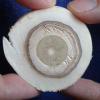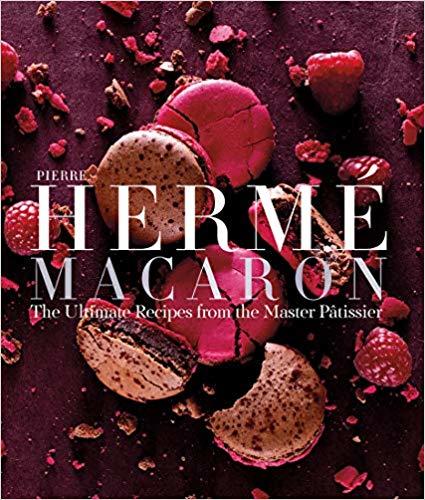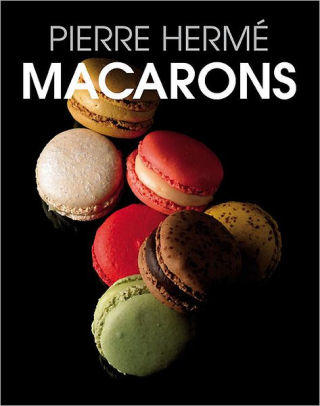Search the Community
Showing results for tags 'French'.
-
Not sure if this is the right place to be posting this. I'm looking for a restaurant that serves La Potence, had it a few times on holiday in the French Alps several years ago and want to introduce this to my girlfriend. Does anyone know of anywhere that serves this??? I live in the South East (Milton Keynes - an hour out of London) but enjoyed it so much last time that would be willing to travel a fair distance to have this meal again.
-
I'm trying to track down a Paris eatery where I can find an old Burgundian staple which has disappeared from menus & blackboards. Saucisson de Lyon, pommes a l'huile. Recommendations or sightings would be most welcome.
-
Dateline Bangkok late 2014/early 2015: France has now replaced Italy as the perceived sine qua non of European fine dining with the opening of two local outposts of French Michelin starred restaurants: Joel Robuchon's burgeoning foray into Asia of his successful L'Atelier brand & Jean-Michel Lorain's J'aime eatery, a Bangkok outpost of his flagship La Cote Saint Jacques at Joigny in France. I wonder if any of our forum's Southeast Asian expat & local gastronomes have visited the aforementioned and, if so, what is their take on the head-to-head start-ups in Bangkok. Does Bangkok merit a Michelin guide of its own?
-
Would some kind soul in the know inform us of the disappearance to the excellent Michelin 1* star Bernard Morillion restaurant in Beaune. It no longer exits. Just to jog someone's memory, it was located as part of the Cep Hotel. It was one of my favourite 1* star restaurants in France and I would like to know when it closed and what happened to the marvellous husband & wife team who cooked & took care of front-of-house operations. The chef-patron was of the old school - more Escoffier in his repertoire than "nouvelle cuisine" [sic] - and his larger than life wife who was certainly une grande dame. Whenever I lunch/dine at a French retaurant I envsion this lovely restaurant as my personal benchmark for the quintessential French Michelin 1* restaurant of the old school genre. Call me old fashioned...or what?
-
I'm always finding that my glazes are incredibly thick when I downscale my recipes. I am not sure whether it is the ingredients I use, my technique or the recipe is problematic when scaled down. Do I just add sugar syrup to thin it down to required viscosity?
-
Le Coucou is the new restaurant (opened for reals last week) collaboration between restaurateur Stephen Starr and Chef Daniel Rose of Spring, a fairly acclaimed restaurant located in Paris. That backstory need not be explained here; suffice to say that Significant Eater and I have had the pleasure of dining at both the tiny Spring 1 (once), and the more ambitious Spring 2 (a number of times), and it was always a fun and delicious time. Plenty of restaurants open in New York City; often they come with lots and lots of hype. Le Coucou is certainly one of them, as the PR bandwagon got rolling a while ago. And normally we like to give restaurants at least a little while to get their footing, but with this one we just couldn't wait, so off we were to Lafayette Street - on night two of service. I didn't even know if we'd get a table, since we were sans ressies, but we figured we could just grab a cocktail, even if we couldn't have dinner. But arriving early, we were offered a table by the charming Maître D' and lovely hostesses and hosts, though we did have a drink first, in their rather intimate lounge area. Now, I'd introduced myself and Sig Eater to Daniel at Spring years ago, as a friend of a friend. And again, when we were lucky enough to dine at the new Spring. But here, even before I was seated, Daniel (who had zero idea we were coming to have dinner) was by our side, greeting me by name and with hugs and cheek kisses - you know, that lovely French way. And even though he looked like he wanted nothing more than to pass out on the extremely comfortable banquette, he returned to our table any number of time during our meal, to make sure we were enjoying our dinner, to see if there was anything we'd like him to "whip up." Basically the consummate host. French has been seeing a serious revival in NYC over the past couple of years, and that makes us happy, as we love French cooking. I mean, one need look no further than Rebelle, or Racines, or MIMI, or Chevalier, or...well, you get the picture. And here, with classic French technique executed fairly flawlessly, we were in heaven. One of our favorite dishes is a simple Poireaux, poached leeks served in a bracing vinaigrette. Here, chef adds a little something extra, topping the leeks with sweet, roasted hazelnuts. What about fried Delaware eel? Normally, my eel exposure is limited to sushi bars, where the earthy eel get a sweetish topping. At Le Coucou, the Anguilles frites au sarassin are as light as a feather, the eel's buckwheat batter playing well with curried vinaigrette and a subtle brunoise of citrus. Mimolette is a French cheese that as recently as a few years ago had its import halted by the food police, aka the FDA. It's back, and here it graces Asperges au vinaigre de bois. It's a simple lightly-roasted asparagus salad, made special by a smoked wood vinegar sourced somewhere in the wilds of Canada. Asparagus salad One of the dishes chef sent to our table was a knockout - a whole sea bream stuffed with lobster - and my guess is the menu is changing daily, because as I look while writing this, it's not on the online menu now. But here's a picture anyway. Lobster stuffed sea bream A classic of the French culinary canon is Quenelle de brochet. As Julia says in Mastering the Art I, "A quenelle, for those who are not familiar with this delicate triumph of French cooking, is pâte à choux with a purée of raw fish...formed into ovals or cylinders and poached in a seasoned liquid. Served hot in good sauce, quenelles make a distinguished first course. A good quenelle is light as a soufflé..." Quenelle de brochet, sauce américaine Yes it is. And indeed it was. Our main course, which we shared because we wanted to save room for cheeses, was Bourride, a Provencal fish stew that might be known in places like Nice as bouillabaisse. Here, the fabulous fish fumet is stocked with halibut, mussels, clams, and Santa Barbara spot prawns. Served alongside, toasted baguette slathered with aïoli. Suck the head of those prawns, dip the bread, and pretend you're somewhere other than Chinatown - it's easy enough, once inside, because this is a lovely space. Our 3-cheese selection (all American) was swoon-worthy to Significant Eater, and served alongside was an accompaniment of 3 different beverages, which I don't really know if everyone gets - or if Daniel was just being extra nice to us. Speaking of nice, the service staff is super. There was a horde of people working on both the floor and in the kitchen. The front of house people were professional, yet casual. There have a been a few notable restaurant openings this year, where service has been a bit "clumsy." Not here, where everyone is on the same page, and that enhances the experience greatly. What else can I write? Well, I am sad we didn't get to enjoy dessert - we just ate too damn much, but next time! And while we were unexpectedly treated like old friends, with 3 comped dishes from the kitchen and a couple of glasses of champagne when we sat down at our table, I looked around the restaurant any number of times, and everyone sure looked happy. The wine list is extensive - maybe that's part of the reason? There are tablecloths on the tables. There are comfortable chairs. Reservations are taken. All grown-up stuff. But most of all, once you taste this cooking, I think you're going to be happy as well. Le Coucou
-
- 4
-

-
I want to leave my sourdough (itself, not baked loaves of sourdough bread) for a while (going abroad) but I do not want it to die, can I leave it in the freezer? do you have other ideas?
- 7 replies
-
- Bread
- Troubleshooting
-
(and 1 more)
Tagged with:
-
Greetings, I've cooked several recipes from Keller's "Bouchon" the last couple of weeks, and have loved them all! At the moment (as in right this minute) I'm making the boeuf Bourguignon, and am a little confused about the red wine reduction. After reducing the wine, herbs, and veg for nearly an hour now, I'm nowhere near the consistancy of a glaze that Keller specifies. In fact, it looks mostly like the veg is on the receiving end of most of it. Is this how the recipe is meant to be? Can anybody tell me what kind of yield is expected? Any help would be appreciated. Thank you, kindly.
- 4 replies
-
- Cookbook
- Troubleshooting
-
(and 1 more)
Tagged with:
-
Hi everyone, I'm a little pastry chief in France, still learning and really passionate. It's been five months that I did'nt studiy or practise and I miss that so much. I never stop talking about this. I decided to travel in south america to learn everything I can. I'm actually in Central Colombia, and I will travel to Ecuador, Galapagos, Peru, Bolivia and maybe a little bit more if I want to. I have time until march, more or less. My project is to go in the farms and meet the people who grow up the raw material I use for make my pastries, Talk to them and see the plantation would be really helpfull for me to understand how does it works. If people need, I'm volunteer for work in exchange with accomodation and food for a few days. My spanish is not good yet, but I'm learning and sometimes it's more funny to not speak the same language. I'm interested about everything, exotic fruits, citrus, coffee, cacao, sesame, pepper, spices... If some of you is, knows or works with farmers or pastry chiefs in those countries, I would be glad to meet you/them and learn everthing about the work. We can exchange good recipe too. Thank you very much, Loubna
-
So I've been looking at this dish for a while, and while I've seen threads talking about where to eat it, I haven't found anyone who's actually made it. I thought it might be fun to try. This is the recipe I've found (in French, my apologies), and there's an informative YouTube video of same. Again in French, and as a bonus in a heavy southern accent. I'm going to pick up my hare, sausage-meat, foie gras and bard on Wednesday, and get to de-boning. I'll see if I can get my better half to take a couple of photos or videos If anyone has done this before, or anything like it, I'd love to hear any advice you might have. As for now, I have a couple of questions for more experienced eGulleteers before I start: 1- I can't seem to get hold of the requisite pork back fat, but my butcher can provide veal kidney fat. Is this a decent alternative? 2- I've been re-watching the video and re-reading the recipe, and neither say when to remove the string used to truss the hare. Would it be better to do it after taking it out of the cooking liquor? Once it's rolled and chilled? Removing each small piece from each slice - but before or after it's reheated? I have horrific images of doing everything perfectly, then have it fall apart right at the last moment. So any input would be gratefully received. In any case, I'll try and document the process as much as possible for future information/hilarity.
-
My newest cookbook is and I've been cooking from it lately for the past week or so. I absolutely adore it, and the restaurant on which its based. (The seats however, are another story, but that's a minor quibble.) Anyone want to come along for the ride? (the last two pix are dishes at the restaurant, and recipes for those can be found in the book)
-
Lovely sweet little place, except for the seating. We had one of the worst seats in the house after a 30-minute wait for a table for two people; must remember to come earlier to remediate that problem. Buvette 42 Grove Street (Bleecker Street) Greenwich Village Spiced duck confit, giant caper berries, cornichons, toast Cheese and honey Croque madame sandwich Roast chicken, haricot verts, boiled potatoes, mustard vinaigrette -- reimagined as a salad Apple tarte tatin, crème fraîche
-
I will be in the South of France between Sept. and Oct., this fall. Having a house will make cooking a breeze. I am hoping to find 'Peche de Vigne' red-fleshed peaches in the market that time of year. I would like to make jam while I am there and bring it home. Has anyone seen these beautiful deep red peaches in the markets in Uzes? I found them in Paris last year, but that is out of my way. Many thanks!
-
Happy Bastille Day! As I was thinking of cooking something appropriate for today and have the music playing in the background. I thought the lyrics of the France National Anthem can be slightly modified and used against the covid-19 tyranny. I did make crepe for breakfast, but have not decided what to make for dinner. May be I will make something for tomorrow. Anyone have ideas? dcarch
-
I was planning on buying jar of duck confit at the market, but I had a dimwitted moment and grabbed the confit goose gizzards instead. What should I do with them? Suggestions would be appreciated. Thanks! Dan
-
Long story, but I have a friend with whom I share a lust for French patisserie in general and kouign aman in particular. We have another friend, kind of a starry chef in France. We'd like to surprise our Parisian friend by being at least marginally competent with the kouign the next time we meet up. I had always heard of a specialty rolling pin called a Tutove (I think it's the name of the manufacturer). It's supposed to be the Secret Weapon of puff pastry. The idea is that the pin has grooves/ridges that better place butter into the layers of dough. So I found one (a real one, made by Tutove) on Ebay at a good price, but I need any basic tips y'all have for using it. Anyone here use one, or have a resource for how to roll with a Tutove? Many Thanks!
-
One of the surprises from our move to Switzerland is the availability of kosher charcuterie. Sausages of all types, confit, mousse, rietttes, etc... One of the recent finds is this block of smoked beef. It has a nice fat layer in the middle. Any thoughts on how to use it? Should I slice it thin and then fry? Any thoughts would be appreciated.
-
I dont believe that any English translation of Carêmes works exist. An incomplete version was published in 1842 (I think) but even the that version seems lackluster for the few recipes it does cover. I think it's time the world looks to its past, but I don't speak great French and it's a huge task to undertake. I hopefully plan on publishing this work and anyone who helps me will get a very fair cut, and if we decide not to publish it, I'll put it out on the internet for free. I'm working in Google docs so we can collaborate. I'm first cataloging the index to cross reference the pre-existing incomplete English version to give us a reference of what yet needs to be done, and from there we will go down the list of recipies and Translate them one by one. Simple google translate goes only so far, as it is 1700s French culinary terms and phrases being used. I'd like to preserve as much of Carêmes beautiful and flowery language as possible. Who's with me?
-
I have seen referenced in several places on the internet, including Wikipedia, a stat about escoffier recommending 40 minutes for scrambled eggs in a Bain Marie. I cant find where this number is from. On Wikipedia it refers to the book I currently own, the "Escoffier le guide culinaire" with forward by Heston Blumenthal by h. L. Cracknell...specificly page 157 for the 40 minute cooking time of scrambled eggs but it's not in my book on that page! Even tho there is the recipe for scrambled eggs on that page... I've seen the 1903 first edition online.. And it's not in there either.... Where is this number from?? Id like to know in case there is some even more complete book or something out there that I'm missing. Any help would be much appreciated. Thank you.
-
The rise and fall of French cuisine interesting read.
-
There are two local grocery stores here who I'd like to try to sell chocolate to but they have policies forbidding GMO soy, Soy lecithin is allowed only if organic or certified non-GMO. I use a lot of Felchlin, some Valrhona, a little Cacao Barry. The only mention of GMOs I've found from Felchlin is this note in a brochure: GMO absence: Felchlin fulfills current legislative requirements regarding GMO absence. All Felchlin products comply with the Swiss Regulation and the European Council Regulation related to genetically modified organisms in food and feed. Does anybody know what those requirements are? Is anything European going to be GMO-free? Or labeled above some %?
-
Has anyone come across a digital version of Practical Professional Cookery (revised 3rd edition) H.L. Cracknell & R.J. Kaufmann. I am using this as the textbook for my culinary arts students and a digital version would come in very handy for creating notes and handouts.
-
I'm a Brit. I'm also a closet Frenchman. To cap it all, I'm happily retired in Bangkok, the city of a street food culture that's second to none. The Thais are healthy and slim. I'm just this side of alive and far from slim. Lockdown has me fantasizing about my days working in London, Paris and New York, an existence, if one could call it that, revolving around gastronomy of one kind or another. They paid me, not so very much as it happens, to do what I enjoy doing most in life. We all get to do it, but I was one of a fortunate few who made it his metier. Well all that's in the past now, but I still dream of my time in Paris when lunch was a tad short of 2-hours, little-known local bistros remained affordable until the day they were discovered by La Bible (Michelin Guide) and the students were revolting - this was the summer of '68, for heaven's sake. Someone should open bistro here in Bangkok with a table d'hote of Soupe a l'Oignon gratinee, Blanquette de Veau, a stinky Epoisses and Tarte Tatin to finsih with creme fraiche. Ah, it's back to lockdown and pad Thai.
-
After batting about .500 with my previous approach to macarons, I came across Pierre Herme's base recipe online. After two flawless batches of macarons, I've been re-energized to continue to work at mastering them. Specifically, I want to try more of his recipes. My conundrum is that he has, as far as I can tell, two macaron cookbooks and I don't know which one I should get. I can't tell if one is just an updated version of the other or a reissue or what the differences really are. I was hoping somebody had some insight. I have searched online and haven't seen both books referenced in the same context or contrasted at all. This one appears to be older. And this one appears to be the newer of the two. Any insight would be helpful. Thanks,
-
Well, here I am again. It’s been just over 5 years since I last did a food blog. I’m excited and looking forward to doing this one just as I was in 2007! First, an update in general: We’re all well; Linda, Rupert and I. I’ve had a couple of minor strokes, but the magnificent French medical system saw me through those with no permanent damage. We’re still living in France and still loving it. We have moved though; all of about 6 miles. Our farmhouse was just too big and too expensive to run so we sold it. Linda & I now dance a little jig when the energy bills come in. It makes up for the lousy exchange rates! Our ‘new’ house is modern and somewhat smaller than the farmhouse. We still have 1 ½ acres, a pool and plenty of room. We are extremely happy with the move. Our ‘new’ village is just great very friendly. It’s unusual in that it’s actually laid out on a square grid. 400 year old town planning in action. We have a good village shop/ bakery. They made a really nice whole grain loaf in addition to all the normal sizes & shapes of French loaves. We also have small restaurant. Not likely to get any Michelin stars, but one can get a nice meal. They make a wonderful bread pudding. Our newest addition is a small food boutique, only open two days a week. They sell only local produce, fruits, vegetables, sun flower oil, pates, fois gras, a bit of wine and a few herbs. Local enterprise at its most local. I make a point of going in every week. More later, but let’s talk about food. I’ll start by going to the Sunday market in Saint Antonin Noble Val. St Antonin is a very old, very beautiful town right on the Aveyron river about 15 minutes away. Their Sunday market is great, but to be avoided during the summer months due to the crowds and lack of parking. Once we get to October the crowds thin out and the locals return to shop & to gossip. Gossiping being the great French pastime as it is in most countries. I’ll post about the market visit with pictures separately.












